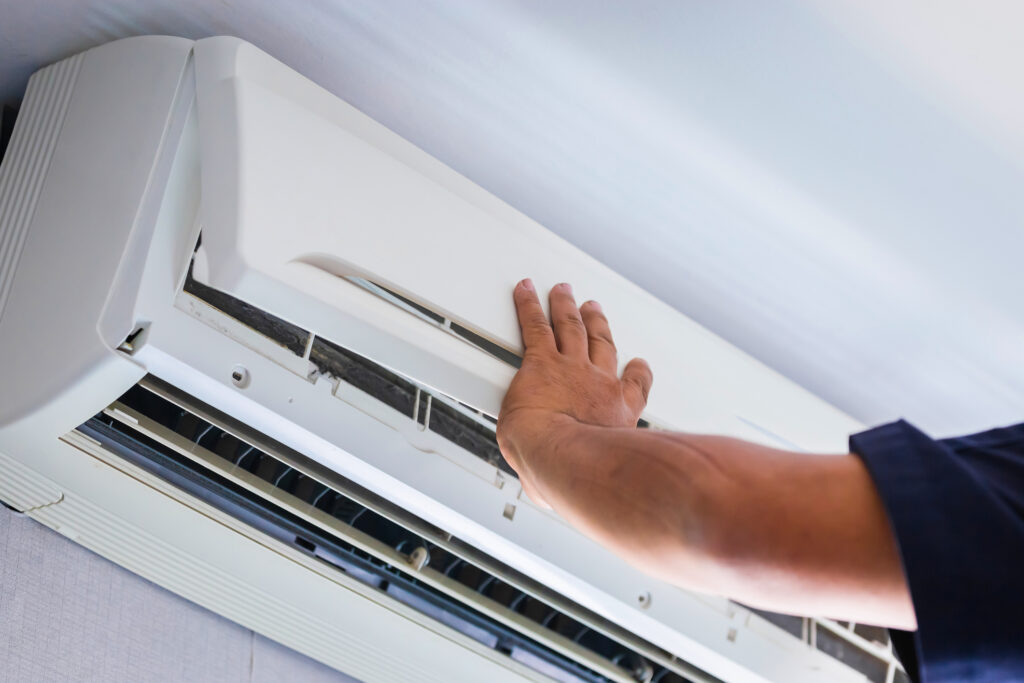 Most of us don’t think about our air conditioning system until we have to – and usually, that’s too late. It’s always better to be proactive and understand how the air conditioner works before you suffer through a hot summer day with no relief. A few primary components make the unit work like a well-oiled machine, and we’ll break those down in this blog.
Most of us don’t think about our air conditioning system until we have to – and usually, that’s too late. It’s always better to be proactive and understand how the air conditioner works before you suffer through a hot summer day with no relief. A few primary components make the unit work like a well-oiled machine, and we’ll break those down in this blog.
Your typical cooling system uses a unique chemical called refrigerant and has three main mechanical components: an evaporator, condenser, and compressor. They work in tandem to quickly turn the refrigerant from gas to liquid, then back again. The compressor is responsible for raising the refrigerant’s temperature and pressure and sending it to the condenser coil, where it turns to liquid. After that happens, the refrigerant makes its way back to the evaporator coil, where it evaporates and cools the coil. Next, a fan blows the air across the evaporator coil, where the heat inside the home is absorbed into the refrigerant. As the cooled air is circulated throughout the house, the heated evaporated gas is sent outside to the compressor. Lastly, the heat is released into the air outdoors as the refrigerant returns into liquid. This repeats until the set temperature on the thermostat is achieved.
Think of the compressor as the heart of your system. If that’s not working, the whole thing will shut down. The main task is to circulate the refrigerant to all of the coils, both outside and inside. Without a compressor, the air conditioner won’t be able to move the refrigerant throughout the coils. Realizing the importance of this particular piece can help you diagnose what might be happening with a faulty unit.
If your system is constantly tripping the circuit breaker or the outdoor unit is shaking, those are both signs that the compressor may be malfunctioning. In addition, telltale signs also include blowing warm air and unfamiliar sounds while running the unit.
To simplify the role of the condenser, think of it in the most literal terms; it simply condenses, meaning that it is responsible for condensing the refrigerant into a cooling liquid. It will turn the gaseous vapor back into a reusable liquid. After it returns to its liquid state, it exits the condenser and finds its way back into the central part of the unit.
The condenser should always go outside the house and not in a garage, basement, attic, or crawl space. It requires an adequate air supply to cool the refrigerant, and without enough air, it can’t work efficiently. In addition to needing a sufficient amount of air to function correctly, it also needs ample airflow, which is impossible to achieve indoors. Lastly, placing the condenser outside ensures plenty of space to release the heat. An indoor placement can cause excessive heating of your home’s interior, which reduces the functionality of the air conditioning system.
If you suspect that either of these components is not working correctly, we are here to help. Always consult with a professional to make sure that things are checked thoroughly.
Schneider Heating & Air Conditioning is the leader in heating, cooling, ventilation, and air quality products and services in the La Crosse area. We have been serving the Coulee Region for more than 80 years. Our technicians are highly and continually trained utilizing the most sophisticated HVAC (Heating, Ventilation, and Air Conditioning) technologies and equipment. All of our service technicians are NATE (North American Technician Excellence) certified—the largest non-profit certification organization that is governed, owned, operated, developed, and supported by the HVAC industry. At Schneider Heating & Air Conditioning, we pride ourselves on amazing customer service. Contact us today.
